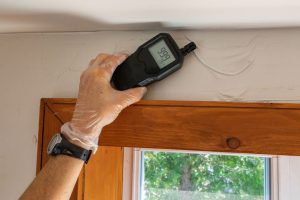
Since ancient times, medicine tells us that fresh, clean air is one of the most important elements that affect our physical and mental health. In other words, without clean air, the body cannot function at full capacity. And when the body is not well, our mental state will suffer too, preventing us from thinking clearly and making decisions easily.
Without oxygen, humans cannot survive. With a polluted air, we can live, but not without the disease settling sooner or later, depending on the resistance of our organism to pathogens. Precisely for this reason, doctors associate mold deposits in the house with a wide range of conditions, not just respiratory allergies. Some studies associate inhalation of mold spores with toxic depression or even bizarre cases of death. And if that wasn’t enough, other research in the field shows that, with every mouthful of air we inhale, we introduce more toxic substances into our bodies than oxygen.
Where is the mold hiding?
Most types of mold are microscopic fungi that grow on a host, such as, for example, a slice of bread, or a wet kitchen countertop. The green mold that usually appears on the bread is visible and it is made up of hundreds or thousands of spores connected together by means of tubular arms, to create a single organism. In addition to these visible organisms, a surprising amount of other types of mold spores can float in the air, invisible without a microscope. This is why, many times, mold can be difficult to find and, especially, difficult to remove. Sometimes the only indicator you have is a heavy smell.
Mold can be formed on any organic substance and loves moist and warm environments. Therefore, it can appear on fruits, on the walls of the bathroom, on old newspapers, on wallpapers or even inside leather clothes. Most of the time, it appears in the cellars and bathrooms, the most humid places in the house. But it can develop anywhere, which is why, especially during the hot season, it is good to have at least one dehumidifier in the house.
Mold spores can attach to our body or that of our pets and thus infest many surfaces in the home. Many times, our houses are affected by mold formed in the cracks of the walls or in other hidden places. If during DIY inspections you cannot spot it in any of these places, you should additionally check the parquet, the carpets, the back of wardrobes as well as other pieces of furniture.
How to stay away from mold
To keep molds away, it is advisable to maintain humidity levels as low as possible – no more than 50% – throughout the day. You can use an air conditioner or dehumidifier during particularly wet weather. Contact water damage experts to inspect all water sources in your home and take precaution to excess water risks. Make sure your home is well ventilated, including the bathrooms and kitchens, because in these areas there is also moisture resulted from human activity (cooking, bathing) and they are particularly prone to be affected by mold formation. Make sure you don’t have leakage into your attic by having a Colorado roofer inspect your roof.